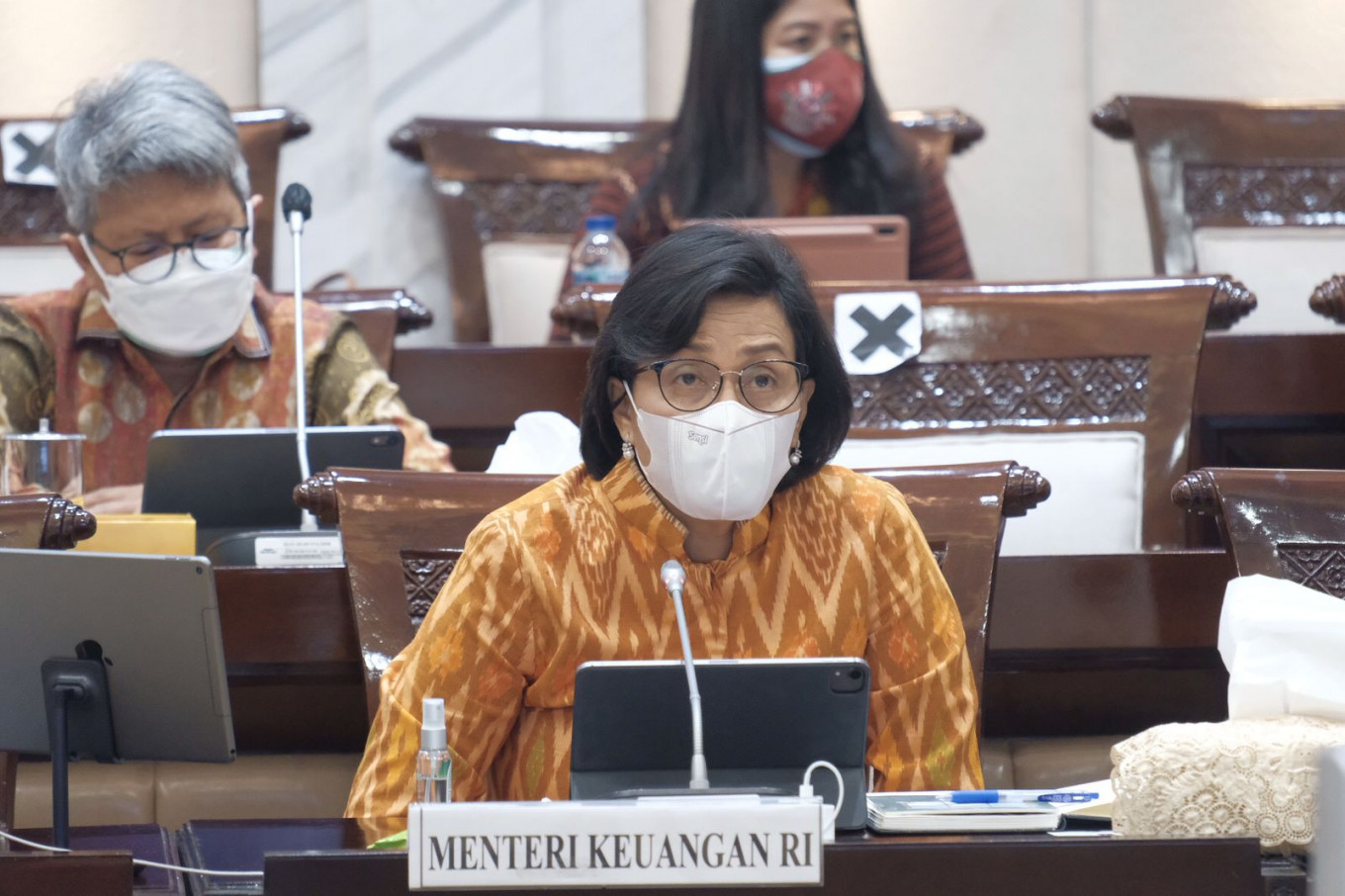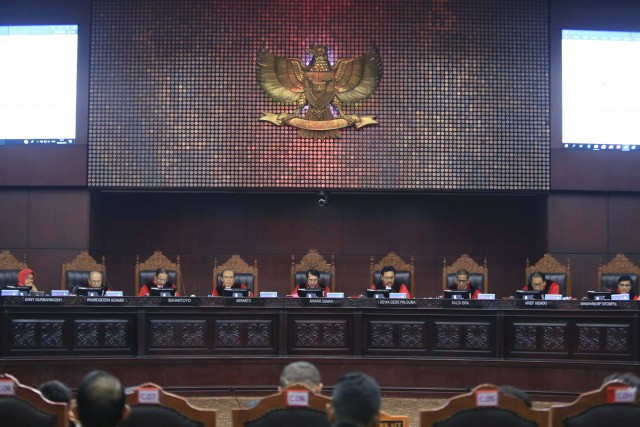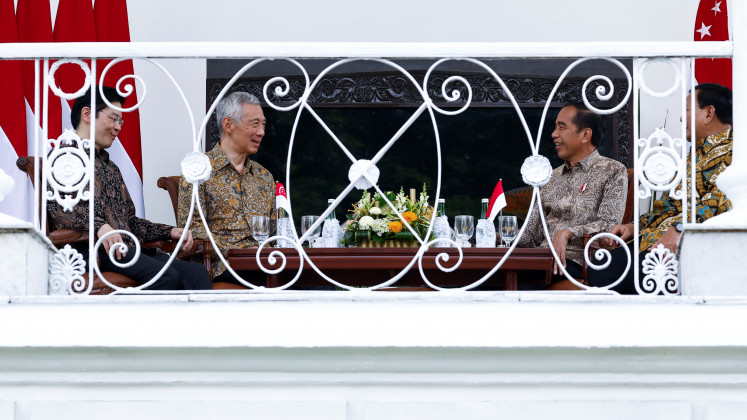Comprehensive VAT reform
The new law will raise the standard VAT rate from the current 10 percent to 11 percent next April and 12 percent in 2025.
Change Size
 Finance Minister Sri Mulyani Indrawati speaks at the House of Representatives on Monday, Sept. 13, about the draft bill on fiscal relations between centers and regions (RUU HKPD) and the bill on the general provisions on taxation (RUU KUP). (Finance Ministry/Public relation team)
Finance Minister Sri Mulyani Indrawati speaks at the House of Representatives on Monday, Sept. 13, about the draft bill on fiscal relations between centers and regions (RUU HKPD) and the bill on the general provisions on taxation (RUU KUP). (Finance Ministry/Public relation team)
T
he reform measures for the Value Added Tax (VAT) system stipulated in the law on harmonized tax regulations that was approved by the House of Representatives on Thursday are most comprehensive and bold, increasing VAT objects to expand the tax base and introducing multiple rates to enhance equality and raising VAT rates.
Indonesia’s VAT system had long been criticized by domestic and international fiscal analysts as too narrow because it gives too many exemptions and incentives and imposes a registration threshold too high for companies subject to VAT. Moreover, it imposes only a single rate of 10 percent, thereby making it quite regressive.
The new law will raise the standard VAT rate from 10 percent now to 11 percent next April and 12 percent in 2025. But the legislation also authorizes the government to determine single, final VAT rates for certain goods and services and certain sectors of the economy. Separating goods and services based on who consume them with multiple rates will help the government to tax consumers progressively. Hence, the multiple VAT rates will consist of standard and reduced rates depending on the consumers of the goods and services.
The new law will increase VAT objects by strictly limiting the negative list, or exemptions, to basic necessities widely used by the majority of people and public services such as health, education, financial and social services.
Certainly, the combination of multiple rates and the increase of VAT objects will raise both the cost of compliance and administration because taxpayers would need to separate and categorize their products based on the product's VAT rates. The directorate general of taxes (DGT) therefore should have enough competent human resources to ensure that the categorization made by taxpayers match with the prevailing VAT rules.
As with most laws, the devil will lie in the technical details. The next challenge is how the government will determine the registration threshold for companies subject to collect VAT, because under the VAT system taxable companies are required to pay VAT on inputs but also are entitled to credit the input VAT with the output VAT they collect.
But the mandate the law grants to the government to determine single, final VAT rates for certain goods and services and for certain business sectors would greatly help in selecting small and medium-scale enterprises (SMEs) that will be obliged to collect VAT. The final rates set for certain goods and services also will relieve producers, notably SMEs, from the administrative burden of calculating and collecting VAT.
It is most imperative for the DGT to prepare its human resources and taxpayers to understand the technical details of VAT calculation and collection under the new system because VAT receipts usually account for more than 45 percent of total tax revenues.
Increasing tax revenues is especially crucial as the government is required by law to reduce the fiscal deficit, which is estimated at 5 percent in 2022 to less than 3 percent in 2023, a cut of 2 percentage points.









